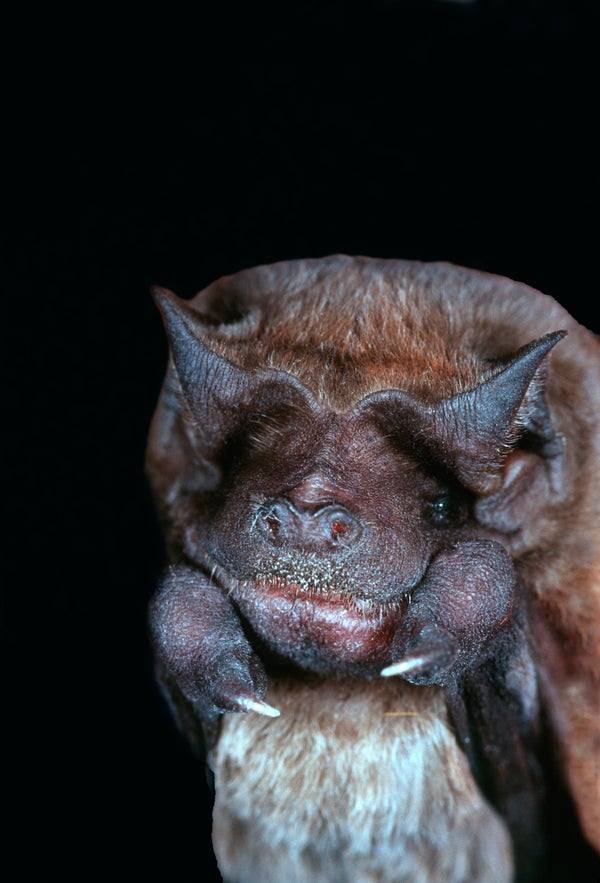Each night, small groups of a species called velvety free-tailed bats emerge from their roosts in the Panamanian rain forests to hunt for their insect prey using echolocation.
“When bats are hunting, especially when they’re in open areas, they produce two really distinct call types. They have their ‘search-phase’ calls when they're just scanning the environment. And then they have ‘feeding buzzes’ when they actually detect prey, like an insect swarm.”
Jenna Kohles, a graduate student at the Max Planck Institute of Animal Behavior in Germany.
On supporting science journalism
If you're enjoying this article, consider supporting our award-winning journalism by subscribing. By purchasing a subscription you are helping to ensure the future of impactful stories about the discoveries and ideas shaping our world today.
Both types of calls are typically too high-pitched for us to hear. But other bats can eavesdrop on those feeding buzzes and use them as a cue for finding food. And it’s always been assumed that the other calls, search-phase calls, don’t include that kind of social information. But Kohles and her team wondered if search-phase calls might also be social and help bats stick together in the dark.
“This is why we then tested first whether these echolocation calls they produce when they’re scanning the environment contain information about a bat’s identity, like in the form of an individual signature. And then, more importantly, we wanted to test whether bats can actually use this information to discriminate between different individuals, just using these search-phase echolocation calls.”
The researchers captured wild bats and exposed them to a particular call over and over again until they became bored and stopped reacting. Then the researchers played the same type of call but recorded from a different bat. If the bats reacted, it means that they noticed that the identity of the caller had changed.
And that’s exactly what happened, which suggests that some kind of individual signature is encoded within search-phase calls. The results are in the journal Behavioral Ecology. [Jenna E. Kohles et al., Socially foraging bats discriminate between group members based on search-phase echolocation calls]
Many other animals that hunt in groups use vocalizations to keep connected. But bats already invest most of their vocal resources in echolocation for hunting. So it appears that these bats have figured out how to accomplish both tasks—hunting and coordination—using a single type of vocalization.
“Bats can use this in a social strategy to forage within hearing distance of particular individuals to potentially find food faster or to find food more predictably.”
Kohles says that this finding offers a new way to think about the evolution of social communication in bats—and that we may be underestimating the role of relationships in bats’ success at hunting.
—Jason G. Goldman
[The above text is a transcript of this podcast.]

